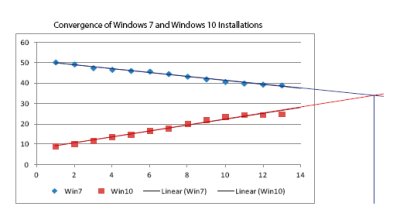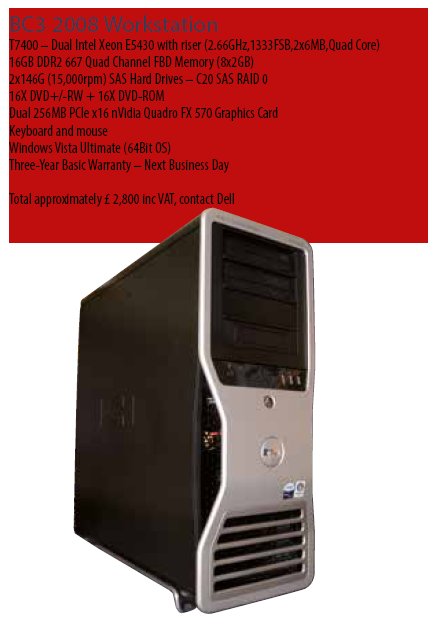articles/Computers/computing-trend-page2
On Trend Computing 2016 - part 2 of 1 2 3 4 5 6
by Mike McNamee Published 01/12/2016

Convergence of Windows 7 and Windows 10 Installations
It is against this backdrop that the desktop remains very important, if fewer in number, and it plays a vital supporting role. The slow uptake of Windows 10 is hardly surprising as it offers little other than a veneer of bells and whistles that nobody wants, along with difficult to control and near-constant demands for upgrades at most inopportune moments (and yes, they can be turned off!). That said, the initial barrage of complaints about Windows 10 has tailed off more recently and we will be giving it a trial on the new work station in due course. Before too long Microsoft will abandon support for Windows 7 which will force the hand of many users. Mainstream support ended in January 2015 and 'extended support' will cease in 2020.
Where does the benchmark stand today?
Such is the power of today's desktop that the majority of users can cope with a machine costing around £700, with perhaps some additional expenditure on storage. However, if you take a basic chassis at this price and start to adjust and add on goodies the price rises to at least £1,500 with software, maintenance contracts, etc. Throw in a bit of future proofing and this rises once again. But to put that into perspective our current workstation has been running since June 2008 and has required just a couple of replacement hard drives to keep thing going. Back then it cost £2,800 and so today you are getting significantly more computing power at lower overall cost.

Apparently harmless changes such as moving up from a Nikon D700 to a D810 have produced quite an overload on storage and download capabilities. It's not that a £700 system and a few external hard drives won't do the job, it's just that things can get tedious! Everything about the D810 (and its Canon equivalent) is slower. The download from the card is slower, the caching in Bridge is slower, the opening a file in ACR is slower, saving multi-layered Photoshop files is slower and finally the nightly back-up is slower. Additionally you have to endure the perennial Windows issue of the system gradually becoming more and more clogged up such that in our case some tasks take 10 times longer (see the data table of benchmarks). In our current workstation it takes 2m 16s to get to the Windows password, 4m 34s before you can open Google and your email, and 7m 30s before the hard drive stops hackling and falls silent.
This is so long that presently the machine is fired up as I go for a shower in the morning, then opened as administrator during breakfast, so that it is ready when I sit down to start work. Seven minutes might not seem like a long time until a client phones early and you have to make small talk with somebody you hardly know for that length of time! Photoshop now takes 40 seconds before you can open a new file compared with the 4s when the machine was new (Photoshop CS2) and 5s after two years (CS4).
Against this back drop and the refusal of Photoshop to perform certain new tasks such as 'tree-rendering', the time for a new machine has come - but what to buy?
Please Note:
There is more than one page for this Article.
You are currently on page 2
- On Trend Computing 2016 page 1
- On Trend Computing 2016 page 2
- On Trend Computing 2016 page 3
- On Trend Computing 2016 page 4
- On Trend Computing 2016 page 5
- On Trend Computing 2016 page 6
1st Published 01/12/2016
last update 21/07/2022 08:46:23
More Computers Articles
There are 32 days to get ready for The Society of Photographers Convention and Trade Show at The Novotel London West, Hammersmith ...
which starts on Wednesday 14th January 2026










